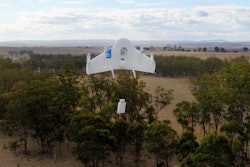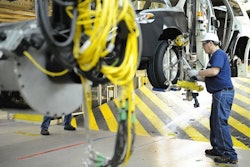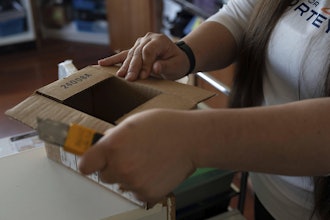On September 10, the Obama administration released two new food safety rules that represent the most sweeping update in the last 70 years to the law that protects the public against foodborne illness: the Food Safety Modernization Act. The new regulations, known as the "Preventive Controls for Human Food rule" and "Preventive Controls for Animal Food rule," represent a major shift in how the federal government deals with food safety. Previously, the government practiced a reactive, crisis-based approach. Now, as a result of the new rules, a preventive model will become the standard as epidemiological concerns and the difficulty in sourcing disease vectors have become paramount in public health discussions.
The law will require both U.S. and international food manufacturers to detail and analyze potential issues that could impact the safety of their products; and, from these analyses, develop and execute control systems and plans at their processing facilities to prevent or minimize recurrence of the identified issues. The new rules touch nearly every aspect of the food manufacturing industry and will require heavy investment in technological improvements for food manufacturers across the "farm-to-table" continuum.
While this poses a challenge for the food manufacturing industry, Research and Development (R&D) tax credit opportunities are one way to reduce the cost incurred by companies in becoming compliant with the new regulations. Although Congress has yet to extend the federal R&D tax credit for 2015, several states, including Indiana, Ohio and Texas, offer businesses their own version. Businesses should take advantage of any R&D tax credits available at the state and federal levels.
However, many companies remain confused about the credit's scope and applicability to their operations. Many are unclear as to determining what kind of research qualifies, i.e., does it need to be breakthrough, revolutionary or original in nature? Another point that companies may be unsure of is whether the savings achievable through use of R&D credits is substantial enough to warrant their use. In other words, the industry does not yet appear fully convinced that the credit is worth pursuing, given the time needed to explore it. Lastly, many in the industry are unaware that the supplies used during research can count towards the R&D tax credit.
Companies Don't Need To "Reinvent The Wheel"
Per Suder v. Commissioner, a recently decided U.S. Tax Court case, "neither section 41 nor the regulations thereunder require taxpayers to 'reinvent the wheel.' " In other words, a broad number of research activities, performed by either company employees or its outside contractors, is covered, so long as the activities: (a)attempt to develop or improve the functionality, performance, reliability, or quality of a product, process, software, technique, invention, or formula (“business component”); (b) encounter uncertainty regarding the company’s capability or methodology to develop or improve the business component, or its appropriate design; (c) include a process of evaluating alternatives to eliminate the uncertainty; and (d) fundamentally rely on technological principles.
This establishes wide latitude for the types of activities that qualify for R&D tax credits. Conceivably, R&D tax credits could apply to many of the activities that the food manufacturing industry will need to undertake in meeting the new FDA requirements, including:
- Brain-storming about how to approach the quarantining process of contaminated food as a whole;
- Improving facility safeguards to protect against the adulteration of food at various points in the manufacturing process;
- Developing and testing prototypes of new manufacturing equipment or new components for existing equipment to better guard against error; and/or
- Enhancing the functionality of software used by equipment involved in screening out contaminants.
New regulations for the food manufacturing industry will likely create uncertainty around the R&D tax credit requirements.. The FDA demands a vigorous inventorying and internal audit of all the industry's processes for safeguarding food: (a) products will need to be better traced during the lifecycle of the manufacturing process; (b) plans for corrective actions will need to be developed to eliminate or mitigate risk when risk is most salient; and (c) improvements to facility operations will need be laid out, systematically implemented and then evaluated for effectiveness. Each of these demands is broadly put to the industry by the new regulations, and each is parsable into numerous means of approach that will undoubtedly involve some level of uncertainty.
Research Tax Credits Do Result In Significant Enough Savings to Warrant the Time
In the most recently published IRS data from 2012, U.S. corporations claimed $10.84 billion in R&D tax credits, a resounding affirmation that the tax credit was a lucrative option for businesses needing to find ways to save. This enabled corporations to reduce their effective tax rate, hire additional personnel, finance new business ventures and more robustly pursue priorities. Indeed, the R&D tax credit can be transformative for how a company manages its finances and operations long term, as federal and state research tax credits can be 15 percent or more of a business' qualified spending.
Given the present regulatory situation of looming FDA regulations, with full industry compliance required by 2016, food industry participants would be well advised not to dismiss the value of the R&D tax credit. As the credit can be claimed for prior open tax years, these credits could be used to help finance the industry's need to invest in improvements in their food safety processes. Additionally, the credit can be carried forward for up to 20 years, allowing for strategic savings in anticipation of industry trends and times for when cash flow may be tight.
The R&D tax credit can be computed in one of two ways. Under the regular method, the credit is equal to 20 percent of qualified research expenditures in excess of a “base period” amount. The regular method base period calculation could require looking back to tax years 1984 to 1988 for research expenditures and gross receipts.
The alternative simplified credit (“ASC”), is, as its name implies, far less cumbersome to calculate and presents a substantial opportunity for taxpayers looking to receive the credit for previous tax years. Under the ASC, the credit is equal to 14 percent of current-year research expenditures in excess of 50 percent of the average of the previous three years’ research expenditures.
Supplies Used During Research Actually Do Count
One thing many within the food manufacturing industry may not realize about the R&D tax credit is that it also extends to expenses related to supplies, even if the supplies are sold or depreciated after use. As long as the supplies were used in an attempt to discover how a product or process could be developed or improved, then they may qualify for the R&D tax credit.
Key Takeaways
The impending effective compliance date for the new FDA regulations has put the food manufacturing industry on high alert. These regulations will require significant industry investment to meet the challenges put before them by the new rules. Now, more than ever, it appears that the R&D tax credit is not merely an important option for the manufacturing industry to utilize, but one which it would need to use to remain competitively viable.
About the author
Chai Hoang is a senior associate with BDO's R&D Tax Services Practice. She helps clients identify R&D opportunities across a variety of industries, including manufacturing, consumer products, financial services, technology and software. Hoang can be reached at [email protected].



















